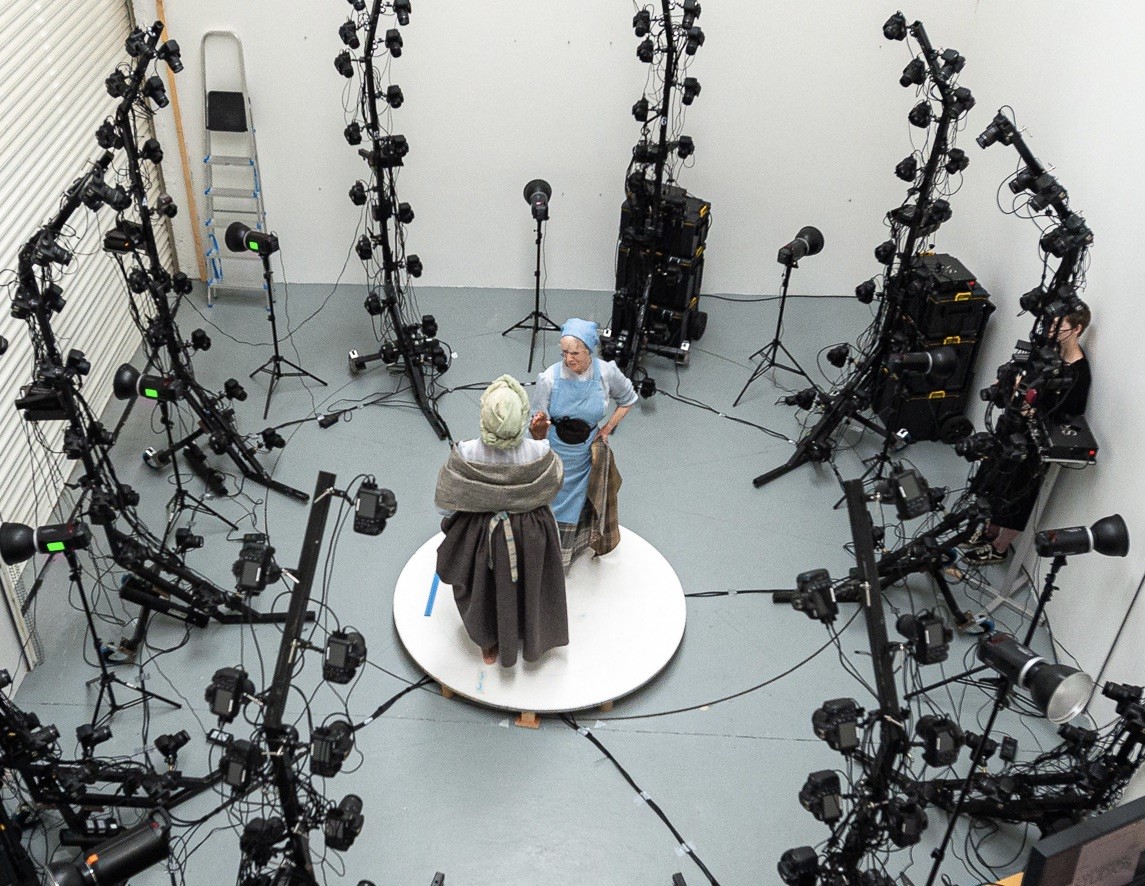A new statue will highlight the contributions and connections between white mill workers in the East Midlands and black enslaved women who grew the raw cotton supplies in the Americas.
The life-size, bronze 'Standing In This Place' statue will be placed in Nottingham's redeveloped Broadmarsh area in summer 2024. It will highlight themes of sorrow, strength and resilience as it portrays the historical links between East Midlands cotton mills in the late 18th to mid 19th century and the raw cotton supplies that were sourced from estates that used enslaved labour.
Both Nottinghamshire and Derbyshire were home to cotton spinning mills in this period, feeding cotton thread into Nottingham's hosiery and lace industries. Several historical cotton mills still exist in Nottingham and there was once a huge cotton mill complex along the River Leen, although this has not survived. Broadmarsh was also once populated with textile workers and dye works The Derwent Valley Mills in Derbyshire, meanwhile, has been designated as a world heritage site by UNESCO . Recognised as the birthplace of the modern industrial factory system, its mills became the model for factories throughout the world.
Plans for the statue will be displayed at a new exhibition opening in Derby this weekend. The 'Standing In This Place' exhibition has been co-created by sculptor Rachel Carter, in partnership with the Legacy Makers community group.
Sculptor, Rachel Carter explains: "This project began with an interest in discovering more about my female ancestors, who found themselves working in a cotton mill as children. In 2020, I met members of the Legacy Makers group, who have been researching their African ancestors that were enslaved, trafficked and forced to labour in cotton fields. Together, we have worked on the idea of a sculpture that acknowledges the undeniable connection of these histories and this exhibition feels like we are one step closer to realising our vision."
I believe women are essential to a thriving world. The Standing In This Place statue means so much to me as the statue symbolises Nottingham's female ancestors, both black and white, and their contribution to the wealth of the cotton industry. As a Nottingham resident, to see it it in the city will be very emotional and a joy to share with others.
The sculpture and exhibition are important representations of our cultural heritage, as it is important that people know where they come from as it informs how they interact with society and the world around them and how society and the world around them interacts with them.

Until recently, there has been a reluctance or disinterest in explaining the East Midlands cotton industry's links to slavery. However, in 2014, the Midlands-based Legacy Makers community group decided to explore and expose this hidden, or erased, history. They wanted to reveal how, behind each piece of spun thread, a high price had been paid in the pain and suffering of the enslaved Africans who had been forcibly trafficked to labour on cotton plantations in European colonies in the Caribbean, South America and the United States of America. Working with Dr Susanne Seymour, Deputy Director at the University of Nottingham's Institute for the Study of Slavery, the partners addressed gaps in both the historical understanding, and public communication of, the Derbyshire cotton mills and their links to slavery. Dr Seymour has worked through the collaborative Global Cotton Connections project from 2014, to trace the raw cotton supplies that were brought to the Derwent Valley mills from around the globe and to interpret with descendant communities of colour the colonial and enslavement connections of the Derwent Valley Mills World Heritage Site.
Dr Seymour explains: "While the Derwent Valley mill owners have typically been regarded as opponents of slavery our team's Global Cotton Connections research, funded by the Arts and Humanities Research Council, has revealed just how reliant they were on supplies of raw cotton grown by enslaved people of African descent in the Americas, from Brazil and the Caribbean to the southern states of America. Women formed a vital and major part of this enslaved workforce. Our academic and community collaboration involving volunteers of African descent from the Legacy Makers group has worked to change the public interpretation of the Derwent Valley Mills' relationship with enslavement, showing where raw cotton supplies originated from and their production through the brutal system of transatlantic enslavement."
The Standing In This Place exhibition is free to all visitors. It will open to the public at Derby's Museum of Making from 14th July and it will run until 7th January 2024.






